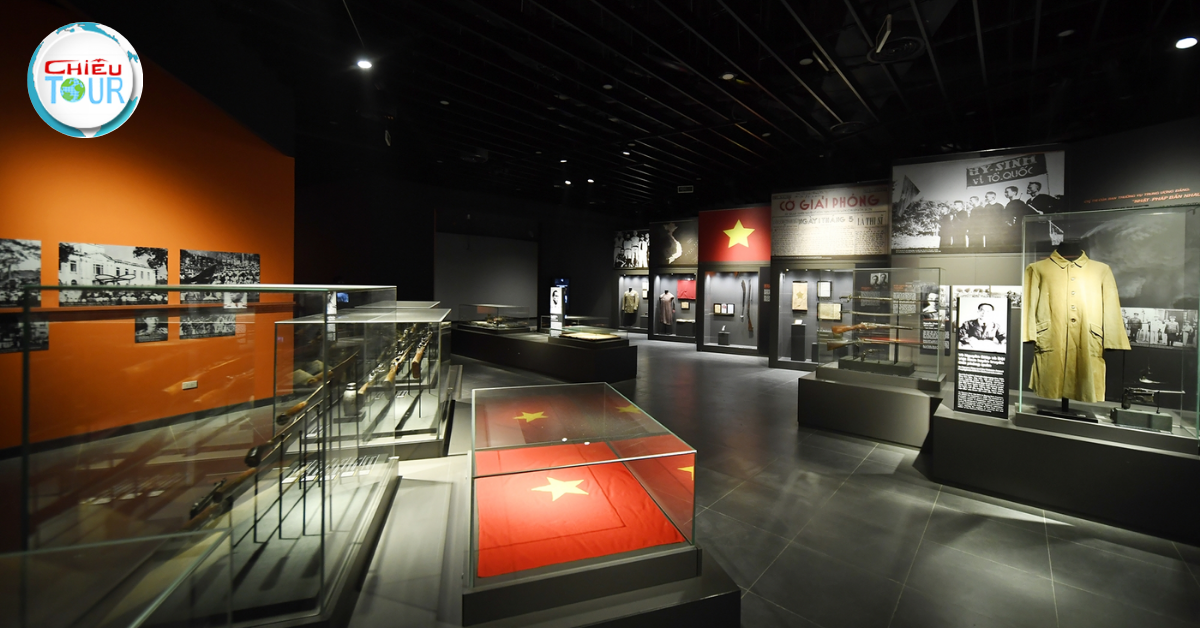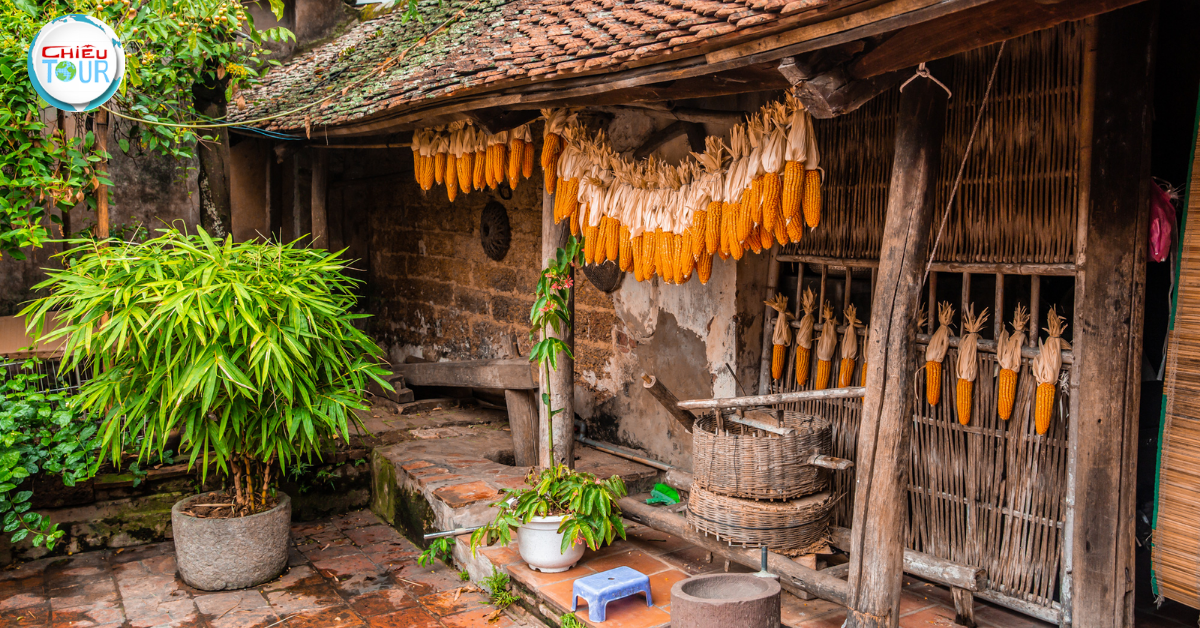Ho Chi Minh City Museum of History
- Author: Admin
- | Hot destination
Essential Information Before Planning Your Visit
Visiting the Ho Chi Minh City Museum of History is a delight for those who want to explore Vietnam’s historical context. Before planning your visit, it’s essential to know some critical information that will enhance your experience.

Location and Opening Hours
The museum is strategically located at 2 Nguyen Binh Khiem Street, District 1, Ho Chi Minh City. This prime location makes it easily accessible whether you're traveling on foot, by taxi, or using public transportation.
The museum is open daily from 8 AM to 5 PM, with the last admission ticket sold at 4:30 PM. It's advisable to arrive early in the day, allowing sufficient time to explore various exhibits thoroughly without feeling rushed.
Admission Fees
One of the attractive features of the Ho Chi Minh City Museum of History is the reasonable admission fee, which allows access to all permanent exhibitions. While pricing may vary for local residents and international tourists, it often remains affordable, thus enabling a broader audience to appreciate Vietnam’s historical wealth.
Getting There
Navigating to the museum can be done conveniently via taxis, motorbike rides, or even a leisurely walk if you’re staying nearby. The surrounding area is notable, filled with cafes and shops, making it an excellent opportunity to blend your historical exploration with local culture.
Recommended Duration for Visit
To fully absorb what the museum has to offer, a visit lasting two to three hours is recommended. This duration allows visitors to leisurely engage with the exhibits while taking breaks to reflect on the intricate stories behind each artifact.
History of the Formation and Development of the Ho Chi Minh City Museum of History
Understanding the history of the Ho Chi Minh City Museum of History enriches the visitor's experience. From its inception to its current stature, the museum has undergone several transformations reflecting the evolving narrative of Vietnam itself.

Inception and Early Years
The origins of the museum date back to 1929 when it was established under the French colonial rule as the "Musée Blanchard de la Brosse." It aimed to collect and display archaeological findings and ethnographic items related to Vietnamese history. The establishment represented a dual purpose: preserving artifacts while promoting tourism.
In 1956, following the end of colonial rule, the museum was renamed the Ho Chi Minh City Museum of History, symbolizing a shift towards celebrating Vietnamese identity and historical narratives independent of foreign influence.
Major Developments Over the Decades
The museum saw substantial developments throughout the years, particularly during the 1970s and 1980s when Vietnam underwent significant socio-political changes. These developments included the expansion of exhibition spaces and collections to better reflect the breadth of Vietnamese history.
New galleries were added to encompass the struggles for independence and the rich tapestry of cultural diversity across different ethnic groups. The museum became a repository of national pride, housing relics and narratives emphasizing resilience and unity.
Modern-Day Enhancements
In the 21st century, the Ho Chi Minh City Museum of History embraced modern technology to enhance visitor engagement. Interactive exhibits and digital displays have been introduced, catering to the younger audience and bridging the generational gap. Moreover, the museum regularly updates its collections to include contemporary art forms and pieces, fostering a dialogue between past and present.
Permanent Exhibition Spaces in the Ho Chi Minh City Museum of History
The heart of the Ho Chi Minh City Museum of History lies in its permanent exhibitions, which intricately weave together the timeline of Vietnam's development and cultural richness.
The History of Vietnam from Prehistoric Times to the Nguyen Dynasty
This expansive exhibition space serves as a gateway for visitors to grasp the arduous yet fascinating journey of Vietnam from prehistoric times through significant dynasties, culminating in the Nguyen Dynasty.

Prehistoric Era
One cannot help but feel a sense of awe while exploring the initial stages of human presence in the region. The prehistoric section showcases various tools and artifacts discovered in archaeological sites, providing insights into the lifestyle and survival strategies of early inhabitants. Tools made from stone, bone, and wood illustrate humanity's ingenuity, while pottery shards showcase the development of artistry and utility.
In-depth descriptions accompany these artifacts, enriching the narrative with contextual information about how these early communities adapted to their environments and interacted with one another.
Dynastic Evolution
As visitors progress deeper into the exhibition, they encounter the rise and fall of various dynasties that shaped Vietnam’s political landscape. Artifacts from the Ly, Tran, and Le dynasties manifest the sophistication of governance, arts, and culture during their respective eras.
Elaborate clothing, royal seals, and exquisite ceramics not only highlight the aesthetic sensibilities but also reflect the intricate social stratification of the time. Documented interactions with other Southeast Asian cultures further emphasize the dynamic exchanges that enriched Vietnam's identity.
The Culture of Ethnic Groups in Southern Vietnam and Some Asian Countries
This exhibition segment celebrates the diversity and richness of the various ethnic groups inhabiting southern Vietnam, offering a unique perspective on their traditions and contributions.
Ethnic Diversity
Southern Vietnam is home to numerous ethnic groups, including the Khmer, Cham, and various indigenous tribes. Each group presents distinct cultural practices and beliefs, which are artfully showcased through traditional garments, musical instruments, and ceremonial objects.
In-depth narratives accompanying the displays elaborate on their customs, languages, and social structures, revealing a vibrant tapestry woven through centuries of coexistence, conflict, and cooperation.
Cultural Interactions
Moreover, the exhibition delves into cultural interactions between Vietnam and other Asian countries. Artifacts from China, India, and beyond reveal the influences that have permeated Vietnamese society over the eons. Visitors can witness how trade relationships, migration, and cultural exchanges have led to the syncretism seen in various aspects of daily life, including food, music, and religious practices.
Outdoor Area
Stepping outside the museum transports visitors to an outdoor area brimming with sculptures and memorials that capture significant historical events and figures.
Sculptural Exhibits
Surrounded by greenery, visitors can admire various monumental sculptures that commemorate historical achievements and revolutionary heroes. Each sculpture tells a story, inviting reflection on the sacrifices made in the pursuit of freedom and justice.
Walking through this tranquil space provides a contrast to the bustling city, allowing visitors to connect with nature while contemplating the weight of history embodied in the artworks.

Educational Programs
The outdoor area also hosts educational programs and workshops aimed at engaging both locals and tourists. Such initiatives encourage active participation in preserving cultural heritage and foster a deeper appreciation for the significance of history in shaping contemporary society.
Through interactive storytelling sessions and hands-on activities, participants can form personal connections with history, creating memorable experiences that extend beyond mere observation.
Visitor Regulations at the Ho Chi Minh City Museum of History
To ensure a safe and enjoyable experience for all visitors, the Ho Chi Minh City Museum of History has established a set of regulations that should be followed during your visit.
Photography Policy
Visitors are generally permitted to take photographs for personal use within the museum. However, restrictions apply to specific exhibits, especially those featuring valuable artifacts or delicate installations. It's vital to pay attention to signage indicating whether flash photography or tripods are allowed.
Being mindful of fellow visitors and avoiding disruptive behavior ensures everyone can appreciate the exhibits peacefully.
Behavior Expectations
Respectful conduct is expected within the museum premises. This includes refraining from loud conversations, running, or any actions that could disturb others. A serene atmosphere enhances the overall experience, allowing each person to immerse themselves in the rich narrative presented.
Accessibility Considerations
The Ho Chi Minh City Museum of History is committed to accessibility for all visitors. Ramps and elevators are available for those with mobility challenges, ensuring everyone can navigate through the exhibitions comfortably.
It's advisable to inquire about guided tours for individuals with special needs, providing tailored experiences that cater to their unique requirements.
Conclusion
The Ho Chi Minh City Museum of History stands not just as a repository of artifacts but as a living narrative of Vietnam's journey through time. Each exhibit invites visitors to explore the complexities of Vietnamese identity, illustrating the profound impact of history on contemporary society.
By immersing oneself in the captivating tales shared through various collections, one gains insight into the resilience, creativity, and diversity that define Vietnam. The museum serves as a bridge connecting past and present, inviting individuals from all walks of life to partake in a shared understanding of humanity’s collective journey.
Whether you're captivated by the ancient relics of the past or inspired by the ongoing evolution of culture and identity, the Ho Chi Minh City Museum of History promises an enriching experience that resonates long after your visit. As you step out into the vibrant streets of Ho Chi Minh City, you carry with you not just memories of artifacts, but the essence of a nation that continues to evolve, celebrate, and honor its remarkable history.
 Vietnam
Vietnam 





